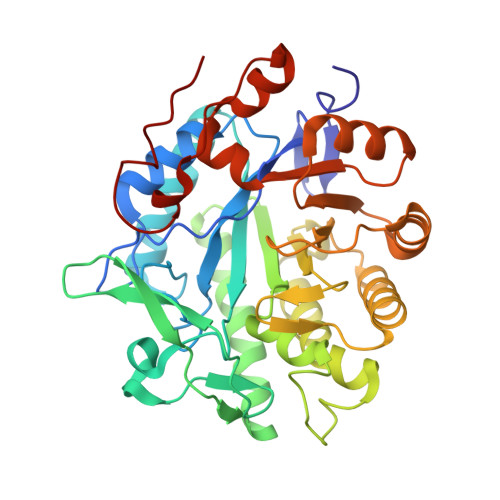Combining X-ray and neutron crystallography with spectroscopy.
Kwon, H., Smith, O., Raven, E.L., Moody, P.C.(2017) Acta Crystallogr D Struct Biol 73: 141-147
- PubMed: 28177310
- DOI: https://doi.org/10.1107/S2059798316016314
- Primary Citation of Related Structures:
5LGX, 5LGZ - PubMed Abstract:
X-ray protein crystallography has, through the determination of the three-dimensional structures of enzymes and their complexes, been essential to the understanding of biological chemistry. However, as X-rays are scattered by electrons, the technique has difficulty locating the presence and position of H atoms (and cannot locate H + ions), knowledge of which is often crucially important for the understanding of enzyme mechanism. Furthermore, X-ray irradiation, through photoelectronic effects, will perturb the redox state in the crystal. By using single-crystal spectrophotometry, reactions taking place in the crystal can be monitored, either to trap intermediates or follow photoreduction during X-ray data collection. By using neutron crystallography, the positions of H atoms can be located, as it is the nuclei rather than the electrons that scatter neutrons, and the scattering length is not determined by the atomic number. Combining the two techniques allows much greater insight into both reaction mechanism and X-ray-induced photoreduction.
Organizational Affiliation:
Henry Wellcome Laboratories for Structural Biology, Leicester Institute for Structural and Chemical Biology and Department of Molecular and Cell Biology, University of Leicester, Lancaster Road, Leicester LE1 7RH, England.
















